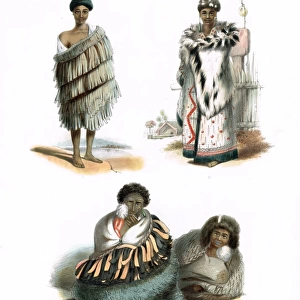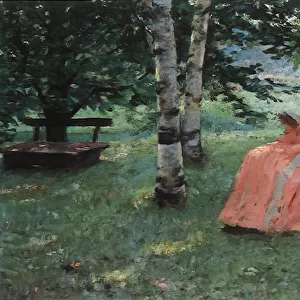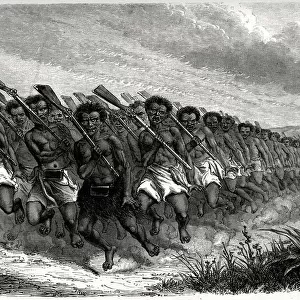Home > Arts > Artists > A > George French Angas
Te Whero-Whero - Te Waro & Te Pakaru - Maori Chieftains
![]()

Wall Art and Photo Gifts from Mary Evans Picture Library
Te Whero-Whero - Te Waro & Te Pakaru - Maori Chieftains
Te Whero-Whero or Patuatu, the principal chief of all Waikato (left), and Te Waro and Te Pakaru (right). Te Waro was the principal chief of the Nga-Ti-Apakura tribe, and Te Pakaru (sometimes called Apokea) was the head chief of the Nga-Ti-Maniapoto tribe. Plate from The New Zealanders illustrated by George French Angas (1822-1886). Date: 1847
Mary Evans Picture Library makes available wonderful images created for people to enjoy over the centuries
Media ID 14145316
© David Cousins / Mary Evans Picture Library
1847 Angas Anthropological Anthropology Chief Ethnographic Ethnography Maori Maoris Principal Ruler Tradition Traditions Tribal Waikato Zealand Zealander Racial
EDITORS COMMENTS
This striking photograph captures the powerful presence of three Maori chieftains, Te Whero-Whero (also known as Patuatu), Te Waro, and Te Pakaru (sometimes called Apokea), during the mid-19th century in New Zealand. The image is taken from a plate in George French Angas's seminal work, "The New Zealanders," published in 1847. Te Whero-Whero, the principal chief of all Waikato, is depicted on the left, wearing a traditional Maori cloak adorned with intricate patterns and a feather headdress. His serious expression and regal bearing convey the immense authority and influence he held over his tribe. Te Waro, the principal chief of the Nga-Ti-Apakura tribe, stands in the middle. He wears a similar cloak and headdress, but his expression is more contemplative, suggesting a deep connection to the land and the traditions of his people. Te Pakaru, the head chief of the Nga-Ti-Maniapoto tribe, is shown on the right. His striking facial tattoos and piercings are a testament to the importance of personal adornment and identity in Maori culture. The intensity of his gaze and the position of his arms, crossed in front of his chest, further emphasize his leadership and strength. This photograph offers a fascinating glimpse into the rich cultural heritage of the Maori people during a pivotal period in New Zealand's history. The traditional dress, tattoos, and body language of these chieftains provide valuable insights into the customs and beliefs of the Maori tribes, making this image an invaluable ethnographic record.
MADE IN THE UK
Safe Shipping with 30 Day Money Back Guarantee
FREE PERSONALISATION*
We are proud to offer a range of customisation features including Personalised Captions, Color Filters and Picture Zoom Tools
SECURE PAYMENTS
We happily accept a wide range of payment options so you can pay for the things you need in the way that is most convenient for you
* Options may vary by product and licensing agreement. Zoomed Pictures can be adjusted in the Basket.







